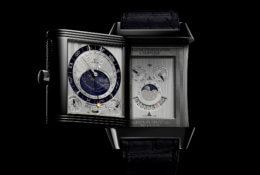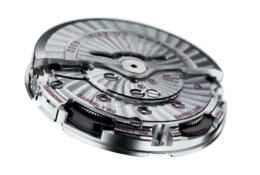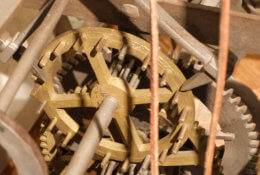Rather than start from scratch, one of the options open to watchmakers entering the third millennium was to take the lever escapement in new directions. Accordingly, Patek Philippe created its Advanced Research department which set about developing an entirely new regulating assembly – lever, escape wheel, balance and spring – based on silicon components. The first big reveal, in 2005, was the Silinvar escape wheel requiring zero lubrication. This was followed, a year later, by the Spiromax balance spring then, in 2008, the Pulsomax escapement. The last piece in the puzzle came in 2011, with the unveiling of the GyromaxSi® balance wheel.
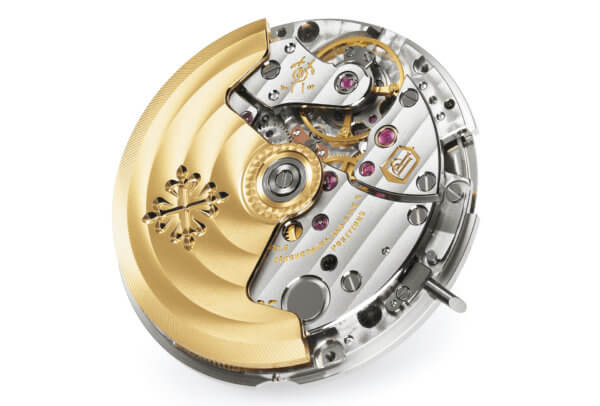
This coherent ensemble significantly improves rate accuracy without any structural change to the movement’s architecture. Patek Philippe’s silicon assortment differs from a manufacturing point of view but, as far as purists are concerned, remains a classic detached escapement; only the raw material for the components has changed. That the silicon revolution should be led by a brand that most would describe as adhering strictly to tradition is proof that anything is possible, although in fairness this research did begin as a joint programme by a consortium that included Rolex, Swatch Group (via Breguet) and the Centre Suisse d’Electronique et de Microtechnique (CSEM) in Neuchâtel.
The truly new concepts
Silicon has made steady inroads since then, at least for balance springs and/or escape wheels and levers. Even Rolex has fitted its women’s watches since 2014 with Syloxi™ balance springs (alongside balance springs in Parachrom, another proprietary alloy). However, none of these systems, which use silicon as an alternative material, alter the fundamental nature of the escapement. That came later. The first of these truly new constructions to come to mind is the Constant Escapement which Girard-Perregaux developed from a concept invented by Nicolas Dehon and patented in 1998 when Dehon worked for Rolex. The specificity of this mechanism is to leverage the elasticity and the constant, programmed deformation of a very thin silicon blade to regulate an assembly of two escape wheels, a type of lever coupled with the silicon blade, and a conventional sprung balance. What is a rather unwieldy system has yet to be finalised for industrial production.
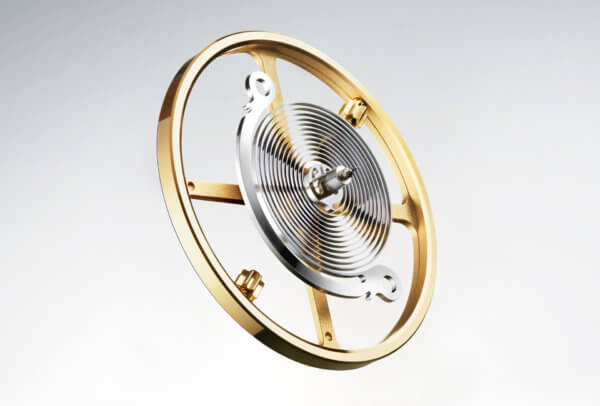
Other brands have introduced silicon-based solutions of their own. In 2016 Parmigiani unveiled the Senfine, a concept that again calls on a new type of escapement which, by consuming very little energy, is designed to extend power reserve from days or weeks to months. The energy-hungry mechanical couplings in a classic regulator are replaced by flexible, frictionless joints in silicon. Credit for the movement goes to Pierre Genequand, an engineer from Geneva who started work on the idea in 2004 after retiring from the CSEM. This unconventional, frictionless escapement, which would not be possible without silicon, is still under development.
Also in 2016, Dominique Renaud (who with Giulio Papi set up the company that is now Audemars Piguet Renaud-Papi) presented the DR01 Twelve First. This original calibre incorporates a “coup perdu” or “lost beat” regulator, similar to the detent escapement in a marine chronometer. The balance wheel is mounted on blades with a very low amplitude of around 15° of arc. This functional mechanism should be followed by another movement, also with an innovative escapement.
Zenith, in September 2017, presented its vision of what the future holds with the Defy LAB. The single-piece oscillator (balance and spring) couples with a monolithic escapement in monocrystalline silicon. The wheel seems to have been inspired by the TAG Heuer Mikrogirder (both mechanisms were designed by the same person). Apart from the monocrystalline silicon escapement, which doesn’t require lubrication, the rest of the movement is a classic automatic calibre vibrating at 108,000 vibrations per hour (15 Hz). This high frequency, plus the use of silicon, means the movement is unaffected by accelerations, gravity or magnetic fields.
High frequencies
And so it seems watchmakers are gravitating towards high-frequency systems that function along similar lines to the Bulova Accutron, but with a mechanical energy source. This was, to some extent, TAG Heuer’s approach when it launched the dual-frequency Mikrogirder chronograph in 2012 – described by the brand as reinventing the mechanical regulator. The team of engineers led by Guy Sémon kept the escape wheel and lever but replaced the balance with metallic elements which, in a specific configuration, produce harmonic vibrations at a given frequency. The regulating organ in the form of a blade (linear oscillator) is made to vibrate and releases, at a controlled rate, the gears that rotate the hands with a precision of 1/2,000th of a second. It’s worth noting that exactly the same principle is used to control the striking mechanism in an antique minute repeater. Using the lever to regulate a wheel to reach a given speed therefore isn’t a new idea per se but one that has been adapted for a different use.
In fact the striking escapement is, strictly speaking, a regulating assembly which, if adjusted for long-term reliability, could become a means of regulation in itself. This is, broadly speaking, what Seiko has done with the Spring Drive. The idea of working on waves and high frequencies must already have been around in 2012, the year De Bethune premiered a new type of regulating organ, dubbed “Résonique”. Based on the law of resonance between mechanical parts, the independent brand set out to pave the way for a new discipline based on the successful synchronisation of an acoustic oscillator vibrating at 900 Hz and a magnetic rotor in a mechanical watch. Above a given frequency, this magnetic escapement enters into resonance then remains at a constant frequency. The result, in theory, is absolute precision. The system is still at the prototype stage.
















